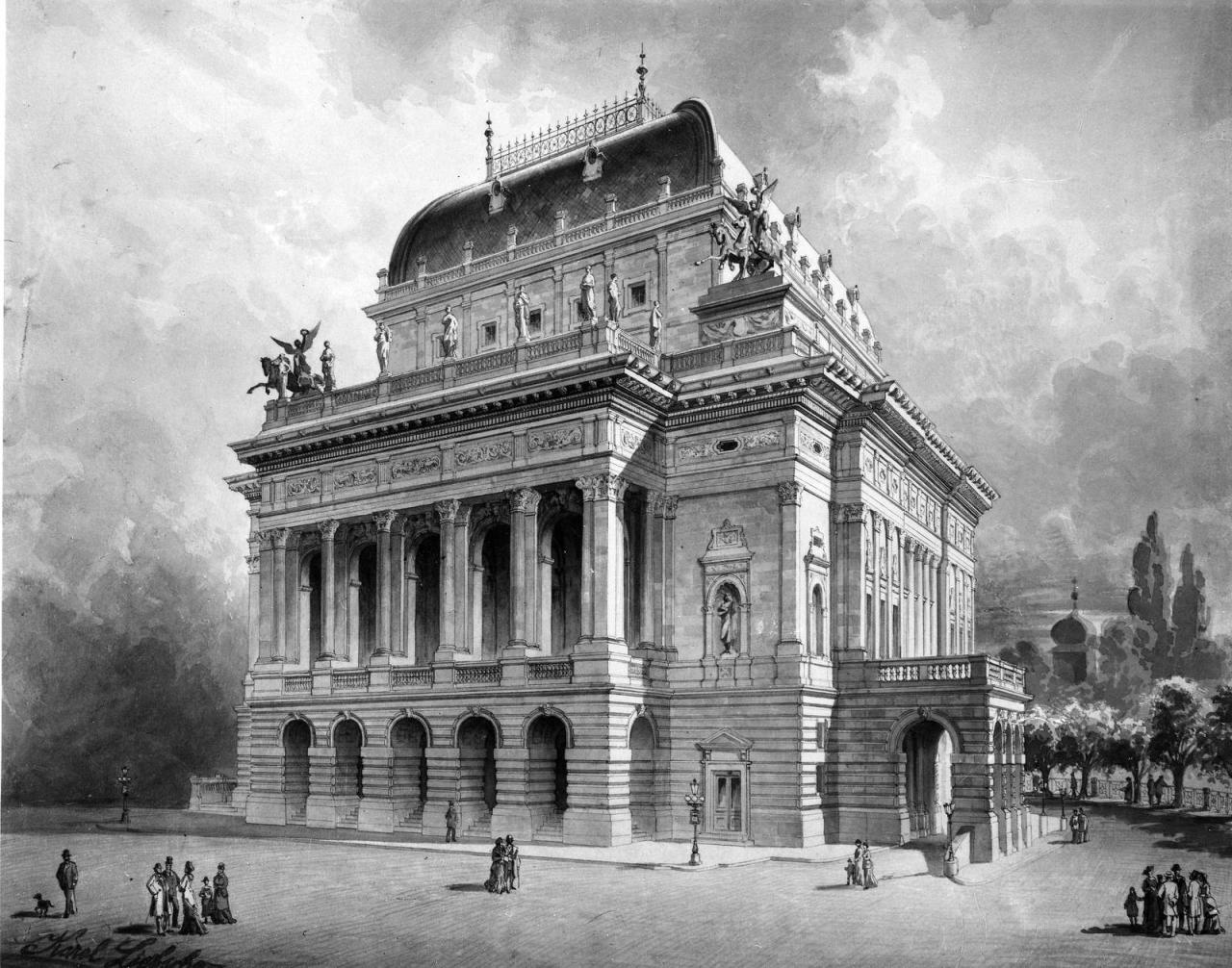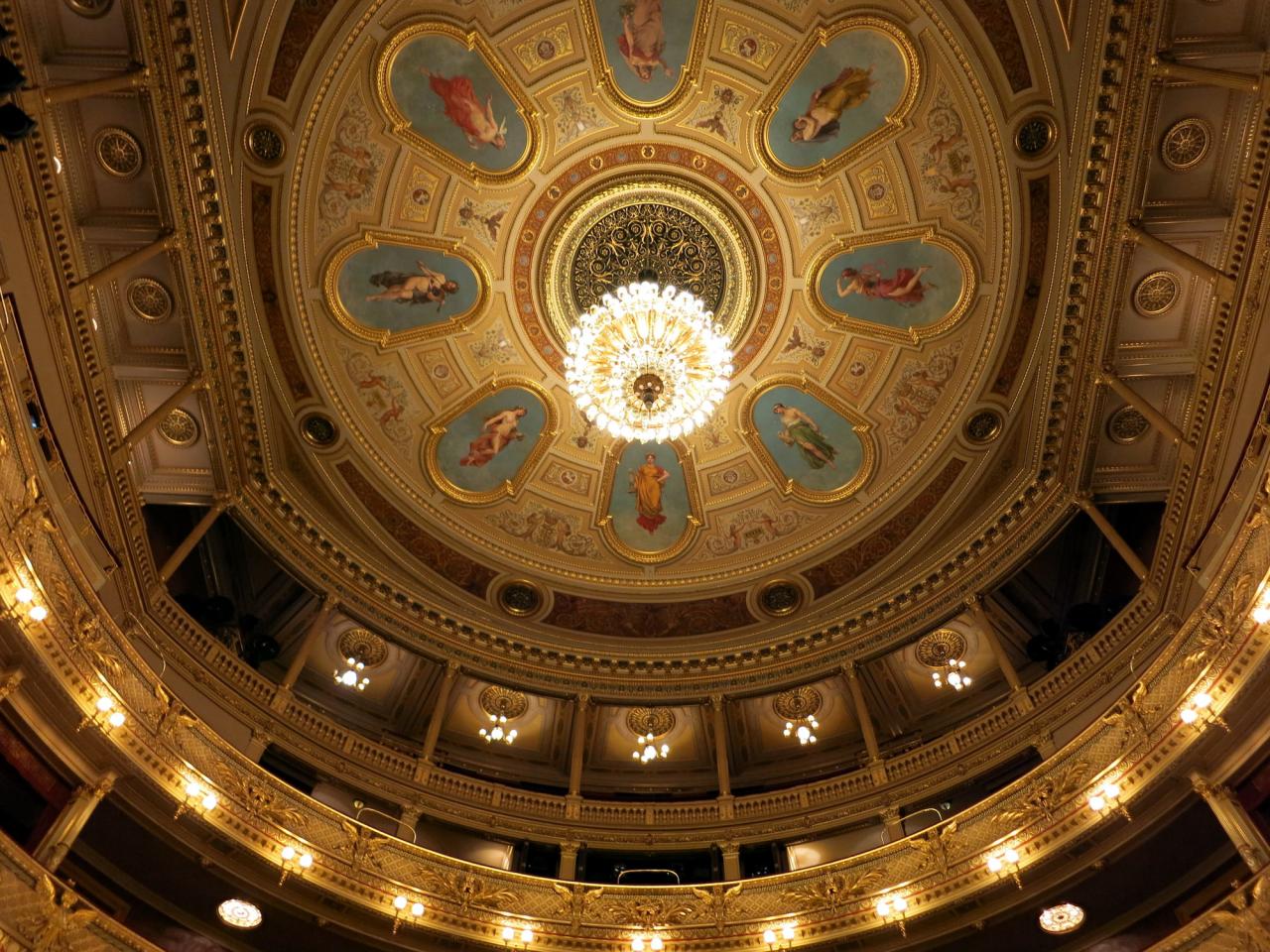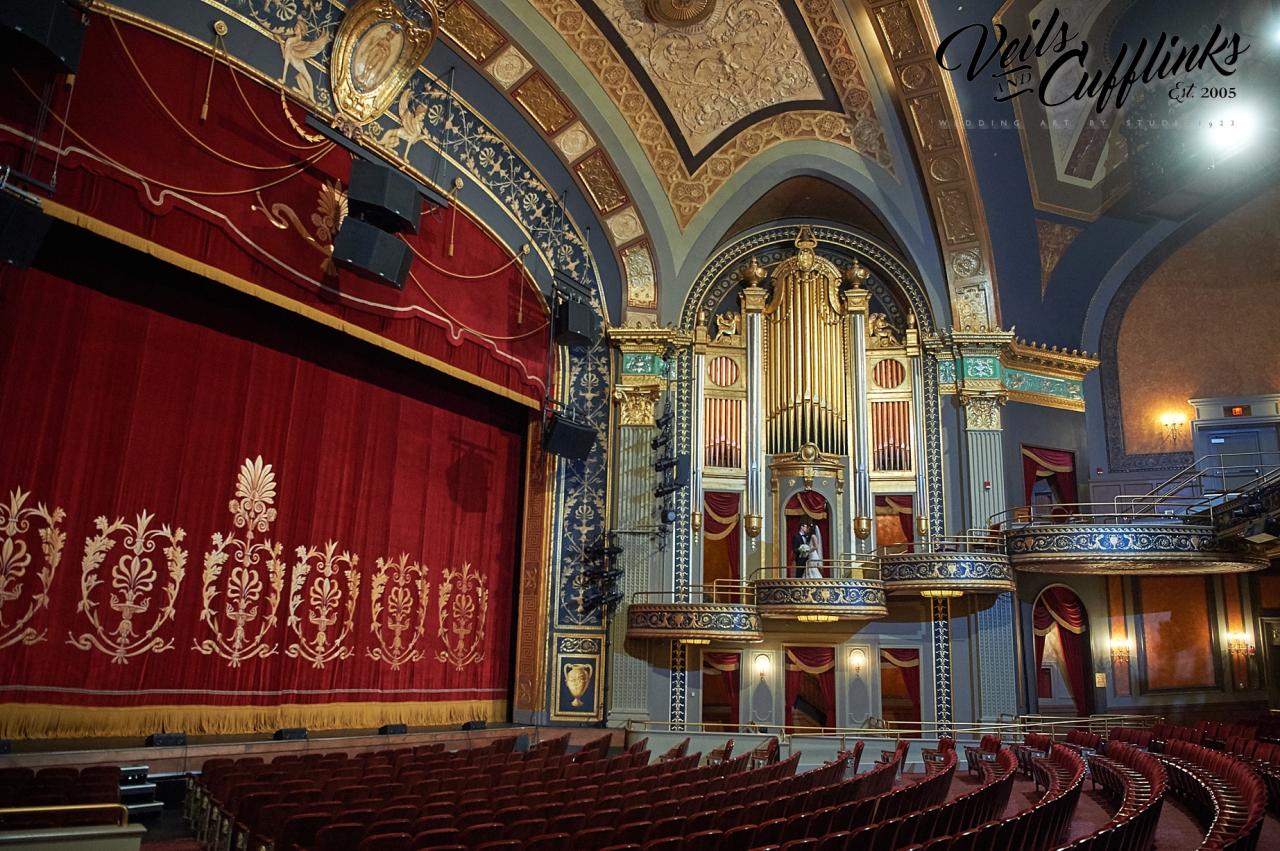Delving into 7 Stunning Examples of Theatre Architecture in Waterbury, this introduction immerses readers in a unique and compelling narrative. From the iconic Palace Theater to the grand Warner Theatre, explore the rich architectural heritage of Waterbury’s theatres in this captivating journey.
Discover the intricate details, historical significance, and cultural reflections encapsulated within each architectural marvel, showcasing the essence of creativity and artistry in the heart of Waterbury.
Research on Waterbury Theatre Architecture
Waterbury, Connecticut, has a rich history of theatre architecture that dates back to the late 19th and early 20th centuries. The city’s vibrant cultural scene has led to the development of several stunning theatres that showcase a mix of architectural styles.
Historical Background of Theatre Architecture in Waterbury
Waterbury’s theatre architecture flourished during the industrial boom of the late 19th century when the city experienced significant growth and prosperity. The construction of grand theatres was a symbol of the city’s cultural and economic vitality.
Prominent Architects in Waterbury
- Warner Theater: Designed by Thomas W. Lamb, a renowned theatre architect known for his elegant and opulent designs.
- Palace Theater: Architect Thomas S. Lamb, who was also responsible for the design of the iconic Radio City Music Hall in New York City, designed this theatre.
Architectural Styles in Waterbury’s Theatres
Theatre architecture in Waterbury showcases a mix of styles, including Beaux-Arts, Art Deco, and Neoclassical. These styles reflect the cultural influences and design trends of the periods in which the theatres were built.
Palace Theater
The Palace Theater in Waterbury is a stunning example of theatre architecture that showcases a unique blend of design elements, historical significance, and cultural identity. Let’s delve into the details of this iconic landmark.
Design Elements of the Palace Theater
The Palace Theater boasts a striking Beaux-Arts architectural style, characterized by its grandeur and opulence. The exterior features intricate detailing, including ornate carvings, columns, and a grand marquee that exudes a sense of glamour. The interior is equally impressive, with lavish decor, a large stage, and plush seating that provides a luxurious experience for theatergoers.
Historical Significance within the Community
Originally opened in 1922, the Palace Theater holds a special place in the hearts of Waterbury residents. Over the years, it has hosted a wide range of performances, from Broadway shows to concerts, becoming a cultural hub for the community. The theater has weathered various challenges, including closures and renovations, but has managed to retain its iconic status and continue to captivate audiences.
Architecture Reflecting Cultural Identity
The architecture of the Palace Theater reflects the cultural identity of Waterbury by blending historical charm with modern amenities. The preservation of its original design elements pays homage to the city’s rich heritage, while the incorporation of contemporary features ensures its relevance in today’s entertainment landscape. The theater serves as a symbol of cultural pride and artistic excellence, drawing visitors from near and far to experience its enchanting atmosphere.
Seven Angels Theatre

Seven Angels Theatre in Waterbury boasts unique architectural features that set it apart from other theatres in the area. The design of this theatre plays a significant role in shaping the local arts scene and providing a unique experience for audiences.
Unique Architectural Features
- The exterior of Seven Angels Theatre features a sleek and modern design, with a mix of glass and metal elements that give it a contemporary look.
- The interior of the theatre is designed to create an intimate atmosphere, with comfortable seating and excellent sightlines from every seat in the house.
- The stage at Seven Angels Theatre is equipped with state-of-the-art lighting and sound systems, allowing for high-quality productions and performances.
Comparison with Other Theatres, 7 Stunning Examples of Theatre Architecture in Waterbury
- Compared to the historic architecture of Palace Theater, Seven Angels Theatre stands out for its modern and minimalist design.
- In contrast to the larger seating capacity of Palace Theater, Seven Angels Theatre offers a more intimate setting for performances, creating a closer connection between the audience and the performers.
- While other theatres in Waterbury may focus on preserving historical elements, Seven Angels Theatre prioritizes contemporary design and technology to enhance the overall theatrical experience.
Impact on the Local Arts Scene
Seven Angels Theatre has had a significant impact on the local arts scene in Waterbury. Its modern design and state-of-the-art facilities have attracted a diverse range of performances and productions, catering to a wide audience. The intimate setting of the theatre allows for a more immersive and engaging experience for theatergoers, fostering a vibrant arts community in the area.
The Strand Theater
The Strand Theater in Waterbury stands as a remarkable example of architectural beauty and historical significance. This iconic theater has played a pivotal role in the cultural landscape of the city, attracting theater enthusiasts and history buffs alike.
Architectural Details
The Strand Theater boasts a stunning Beaux-Arts architectural style, characterized by its elaborate ornamentation, grand facade, and intricate detailing. The exterior of the theater features ornate columns, sculptural elements, and a majestic marquee that exudes elegance and grandeur. The interior is adorned with luxurious furnishings, intricate moldings, and a magnificent ceiling that showcases exquisite craftsmanship. The overall design of The Strand Theater reflects the opulence and sophistication of the early 20th century, transporting visitors to a bygone era of glamour and charm.
Historical Context
Constructed in 1922, The Strand Theater was originally designed as a vaudeville venue, hosting a variety of live performances and entertainment acts. Over the years, the theater evolved to screen movies and eventually became a beloved cultural institution in Waterbury. Despite facing challenges and changes in ownership, The Strand Theater has managed to survive and thrive, standing as a testament to the city’s rich cultural heritage and architectural legacy.
Role in Preserving Heritage
The preservation of The Strand Theater is not merely about maintaining a historic building; it is about safeguarding a piece of Waterbury’s identity and heritage. As one of the few remaining theaters of its kind in the region, The Strand Theater serves as a living museum of architectural excellence and cultural significance. By hosting a diverse range of performances, events, and educational programs, the theater continues to engage with the community and nurture a love for the arts, ensuring that its legacy endures for generations to come.
The Thomaston Opera House
The Thomaston Opera House, located in Waterbury, Connecticut, is a stunning example of historical theatre architecture. Built in 1884, the Opera House boasts a beautiful Victorian-style facade with intricate details and ornate decorations, showcasing the architectural flair of the time.
Architectural Characteristics
The Thomaston Opera House features a grand facade with elaborate trim work, arched windows, and a towering marquee that adds to its charm. The interior of the theater is equally impressive, with a spacious auditorium adorned with plush seating, ornate moldings, and a stunning proscenium arch. The Opera House also includes a beautifully decorated lobby and grand staircase, adding to the overall elegance of the space.
Significance in Waterbury’s Theatrical Landscape
The Thomaston Opera House holds significant importance in Waterbury’s theatrical landscape as it has been a cultural hub for the community for over a century. The theater has hosted a wide range of performances, including plays, musicals, concerts, and community events, bringing together residents and visitors alike to enjoy the arts. Its historical significance and architectural beauty contribute to its status as a cherished landmark in the city.
Renovations and Preservation Efforts
Over the years, the Thomaston Opera House has undergone several renovations and preservation efforts to maintain its historical integrity and ensure its continued use as a cultural venue. Renovations have included updates to the seating, sound system, and lighting equipment to enhance the audience experience while preserving the theater’s original design. Preservation efforts have focused on maintaining the building’s facade, interior decor, and structural integrity to ensure that future generations can continue to enjoy the beauty of this architectural gem.
The Mattatuck Museum Arts & History Center: 7 Stunning Examples Of Theatre Architecture In Waterbury

The Mattatuck Museum Arts & History Center in Waterbury is a unique architectural gem that combines history and art in a stunning way. The design of the center enhances the visitor experience by providing a seamless flow between different exhibitions and creating a sense of exploration and discovery for guests. The connection between the architecture and the exhibitions housed at The Mattatuck Museum is evident in how the space is utilized to showcase the artwork and historical artifacts in a cohesive and engaging manner.
Architectural Aspects
The Mattatuck Museum Arts & History Center stands out for its blend of historic and modern architectural elements. The building itself is a beautiful example of Beaux-Arts architecture, with grand columns, intricate detailing, and a sense of grandeur that immediately captures visitors’ attention. The interior spaces are designed to be versatile, with high ceilings, natural light, and open galleries that allow for the display of a wide range of artworks and artifacts.
The use of materials such as marble, wood, and glass adds to the overall aesthetic appeal of the center.
Looking to set up T-Mobile home internet but unsure where to start? Follow these 7 easy steps outlined in How to install T-Mobile home internet in 7 easy steps to have your internet up and running in no time.
Visitor Experience
The design of The Mattatuck Museum Arts & History Center is focused on creating a memorable and engaging experience for visitors. The layout of the galleries and exhibition spaces encourages exploration and discovery, with each area flowing seamlessly into the next. The use of interactive displays, multimedia presentations, and immersive installations adds another layer of engagement for guests, making their visit not only informative but also entertaining.
The center also offers guided tours, workshops, and events that further enhance the visitor experience and encourage repeat visits.
Connection with Exhibitions
The architecture of The Mattatuck Museum Arts & History Center plays a crucial role in how the exhibitions are presented and experienced by visitors. The layout of the galleries, the lighting design, and the overall ambiance of the space all contribute to creating a cohesive and immersive environment for viewing the artwork and historical artifacts on display. The architectural elements, such as archways, alcoves, and grand staircases, are carefully integrated into the exhibition spaces to enhance the narrative and themes of the exhibitions.
This seamless connection between architecture and exhibitions creates a dynamic and enriching experience for visitors, allowing them to engage with the art and history on a deeper level.
The Warner Theatre

The Warner Theatre in Waterbury stands as a testament to architectural grandeur, captivating audiences with its stunning design and historical significance.
Architectural Design of The Warner Theatre
The Warner Theatre showcases a blend of architectural styles, including Art Deco and Neo-Classical influences. The exterior features intricate detailing, towering columns, and a marquee that lights up the night sky. Inside, the theatre boasts a lavish auditorium with ornate decorations, plush seating, and a majestic stage that has hosted countless performances over the years.
Comparison with Other Theatres, 7 Stunning Examples of Theatre Architecture in Waterbury
Compared to other theatres in the region, The Warner Theatre stands out for its opulent design and attention to detail. While some theatres may focus on a specific architectural style, The Warner Theatre seamlessly combines different influences to create a truly unique and memorable experience for visitors.
Cultural Impact of The Warner Theatre
The Warner Theatre has played a vital role in the cultural enrichment of Waterbury, serving as a hub for artistic expression and community engagement. Its stage has welcomed world-class performers, Broadway productions, and local talent, bringing a diverse range of entertainment to the city. The theatre’s continued presence not only preserves its architectural heritage but also contributes to the vibrant cultural scene of Waterbury.
End of Discussion
As we conclude this exploration of 7 Stunning Examples of Theatre Architecture in Waterbury, the symphony of historical narratives, artistic expressions, and cultural influences harmonize to paint a vibrant picture of architectural excellence. Each theatre stands as a testament to the city’s rich cultural tapestry, inviting visitors to bask in the grandeur of its architectural splendor.
FAQ Summary
What makes the Palace Theater unique?
The Palace Theater stands out for its opulent design elements and historical significance within the Waterbury community.
How does Seven Angels Theatre contribute to the local arts scene?
Seven Angels Theatre’s unique architectural features play a vital role in enriching the local arts scene and fostering creativity.
What sets The Warner Theatre apart from other theatres in Waterbury?
The Warner Theatre’s architectural grandeur and design influences make it a standout cultural landmark that enriches the city’s cultural landscape.




